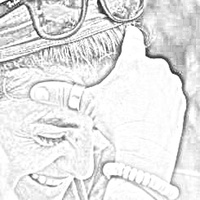
Tracey Pyscher
I am currently serving as an Associate Professor of Secondary Education in the Woodring College of Education at Western Washington University. I teach a range of education, WGSS (Women, Gender, Sexuality Studies), and Honors courses.
My commitments as a researcher and educator are shaped by my childhood and adolescent experiences of persevering through familial domestic violence, working class conditions growing up in Flint, Michigan, and identifying as a queer youth. Combining my work in urban education, my standpoint of childhood/adolescent experiences, and publications have shaped my research agenda and provided me with the inspiration in creating more just K-12 and community-based organizations. My overall research commitments examine the often-marginalizing circumstances that youth with histories of domestic violence face in their navigation of schooling including problematic interactions with school staff and literacy learning. Specifically, my research investigates the discourses, actions, and educational practices that shape the identities and cultural repertoires of youth with experiences of childhood and adolescent domestic violence and literacy learners in general.
Making meaningful connections between social justice, equity, and teaching practices that improve the educational achievement of historically and currently under-served urban learners has also anchored my pedagogical commitments as a teacher educator.
Supervisors: Dr. Cynthia Lewis
Phone: 651 983-3294
My commitments as a researcher and educator are shaped by my childhood and adolescent experiences of persevering through familial domestic violence, working class conditions growing up in Flint, Michigan, and identifying as a queer youth. Combining my work in urban education, my standpoint of childhood/adolescent experiences, and publications have shaped my research agenda and provided me with the inspiration in creating more just K-12 and community-based organizations. My overall research commitments examine the often-marginalizing circumstances that youth with histories of domestic violence face in their navigation of schooling including problematic interactions with school staff and literacy learning. Specifically, my research investigates the discourses, actions, and educational practices that shape the identities and cultural repertoires of youth with experiences of childhood and adolescent domestic violence and literacy learners in general.
Making meaningful connections between social justice, equity, and teaching practices that improve the educational achievement of historically and currently under-served urban learners has also anchored my pedagogical commitments as a teacher educator.
Supervisors: Dr. Cynthia Lewis
Phone: 651 983-3294
less
Related Authors
David Seamon
Kansas State University
Remo Caponi
University of Cologne
Beth Ferri
Syracuse University
Elena Loizidou
Birkbeck College, University of London
José Rodrigo Rodriguez
Unisinos
Eitan Grossman
The Hebrew University of Jerusalem
John Sutton
Macquarie University
Karen Wohlwend
Indiana University
Simon Springer
The University of Newcastle
Andrew W Wilkins
Goldsmiths, University of London
InterestsView All (12)










Uploads
Papers by Tracey Pyscher
Advocates for these programs claim that SEL and TIP create a necessary foundation for greater self- awareness, better relationships, and improved learning capacities for children and youth. We, along with other authors in this issue, suggest that these programs often focus on those who are marginalized through race, class, and/or experiences of violence, including family violence, while ignoring the social conditions that create marginalization and its effects, and neglecting the many strengths and strategies deployed by these children and youth. This focus can lead to labeling and/or silencing legitimate expressions of resistance and difference in a quest to elicit specific types of behavioral and cultural conformity for students to be deemed “learning ready” (e.g., Crampton, Pyscher & Robinson, 2018; Pyscher, 2019).
youth with histories of domestic violence (or HDV youth) navigate and resist deficit laden school subjectivities shaped by special education discourses of medicalization and pathologization. In one case study, I spell out how an elementary school created and maintained an HDV child’s EBD (emotional behavioral disordered) subjectivity with detrimental effects. The article ends with further critique of the social and emotional (behavioral) frameworks populating our schools today and their relationship to the
school-to-prison pipeline for children and youth with histories of domestic violence.
Design/methodology/approach – Grounded in the theoretical and analytical concept of activity theory, this study uses qualitative methods and activity systems analysis. Observations are the primary data source coupled with a detailed activity analysis supported by artifacts, images and interviews. Program participants included 12 youth, 2 youth mentors, 1 adult coordinator and 1 adult facilitator.
Findings – Findings illustrate that all subjects (participants) in the program co-created and shaped the activity system’s object (or purpose). Analyses also reveal the ways in which the program enables and empowers youth through its development of participatory literacy practices that “can facilitate learning, empowerment, and civic action” (Jenkins et al., 2016).
Originality/value – Overall, this study is a contribution to the eld as it responds to the need for close examinations of complex technology-mediated learning settings “through the lens of equity and opportunity” (Ito et al., 2013).
Keywords: Media, New literacies, Literacy
In an earlier article titled, “Throwaway Youth: The Sociocultural Location of Resistance to Schooling,” we conceptually highlighted the ways in which resistant youth challenged attempts toward cultural homogenization within public school systems. We traced how youth from historical and lived traumatic experiences such as African American, Native American, and youth from histories of domestic violence (HDV youth), navigate and resist the dominant narrative of pity and punishment in public schools. We argued that these resistive youth have been tagged with constructed identities as “broken youth.” The article situated the practice of school discipline in terms of historically oppressive and contemporary neoliberal agendas that seek to throw away noncompliant students and label them as deviant and/or disordered. We drew from Bauman’s (2009) conception of a world where vast numbers of human beings are increasingly seen as expendable and unworthy of a dignified existence seeking to uncover how disciplinary and labeling practices becomes a vital part of the school-to-prison pipeline. We traced how deficit oriented discourses of historical and familial domestic violence help shape the often-unintentional violent discourses of pity and punishment towards resistant youth in public school settings.
Our proposed book chapter extends these original lines of thinking, situating our earlier conceptual ideas in empirical examples of youth who have social and cultural experiences of childhood/adolescent domestic violence and historical trauma. These empirical stories are taken from Pyscher’s (2015) larger study, Contradictions and Opportunities Learning from the Cultural Knowledges of Youth with Histories of Domestic Violence. This book chapter discusses the challenges HDV youth of color face when they navigate normative and hegemonic interactions in school while analyzing the resistive identities and performances these youth take up in response to social interactions they perceive as violating. The study is situated in a public, urban middle school and outlines how HDV youth make sense of their daily interactions with school peers and staff. Their stories along with the voices of their caregivers offer a counter-narrative to the dominant discourses often shaping the representations of HDV youth. Data analysis is grounded in the theoretical conceptions of critical sociocultural theory (Lewis, Enciso, & Moje, 2007), resistive ambivalence (Pyscher, 2015; Pyscher & Lozenski, 2014), and Scott’s (1990) conceptualization of hidden and public transcripts. This broad but cohesive theoretical foundation is central to this analysis to better understand and theorize the intersections of actions, identities, practices, and discourses that HDV youth and youth grappling with historical marginalization use in educational interactions. Framing domestic violence as a sociocultural experience rather than a set of individualized traumatic experiences counters the dominant narrative that youth with traumatic histories are in need of behavioral “fixing” thus creating space where HDV youth can voice alternative and complex counter narratives.
Our chapter speaks broadly to the school-to-prison pipeline by continuing to illuminate how the constellation of teacher practice and pedagogy, and practices of other school personnel such as administrators, resource officers, and special education instructors, working within the logics of efficiency come into contact with youth. By delving into the unspoken realm of cultural practice using case analyses of the experiences of youth, our work highlights the ways in which school personnel can unwittingly constitute the pipeline, even when they are attuned to educational disparities. The significance of this chapter is to provide educators and educational scholars with a cultural lens through which to change the discourse and practices that continue to result in disproportionate numbers of HDV youth and youth from historical trauma entering the pipeline.
We are willing to adhere to the timeline presented in this call.
of her social experience of domestic violence. The article draws upon theoretical and methodological insights, including Butler’s notion of performativity, Scott’s theory of resistance, Hill-Collins’s standpoint theory, as well as Scollon and Scollon’s mediated discourse analysis. Similar to the girls in this study, sharing an identity of being a survivor of domestic violence herself, the author discusses how she and female participants (re)worked and (re)wrote agentic social moments in the field. Telling girls’ stories through counter-narratives and participatory research practices helps to reposition the often deficit subjectivities ascribed to girls with HDV.
violent practices in public schools as acts of cultural survival. Educational practices and discourses that create “disordered” identities for such youth are re-envisioned in this article.
within public school systems. We trace how youth from historical and lived traumatic experiences such as African American, Native American, and youth with histories of domestic violence, navigate the dominant narrative of pity and punishment in public schools. We argue that these
resistive youth have been tagged with constructed identities as “broken youth.” The article situates the practice of school discipline in terms of traditional and neoliberal agendas that seek to throw away noncompliant students and label them as deviant and/or disordered. Drawing from Bauman’s (2009)
conception of a world where vast numbers of human beings are increasingly seen as expendable and unworthy of a dignified existence, this article seeks to uncover how disciplinary and labeling practices become a vital part of the school-to-prison pipeline.We trace how deficit oriented discourses of historical and familial domestic violence help shape the often-unintentional violent discourses of
pity and punishment towards resistant youth in public school settings.
and Erin Stutelberg showcase a sequence of secondary English methods courses framed by critical sociocultural theory. In these courses, teacher candidates act as critical ethnographers who design comprehensive plans for teaching, learning, and assessment derived from inquiries into students’ lives and communities. They also develop repertoires of critical reading and writing practices that help young people to contest language ideologies, take action, and transform their worlds.
Thesis Chapters by Tracey Pyscher
embodied in the critique of the school-to-prison pipeline literature (Pyscher & Lozenski, 2014).
My study discusses the challenges HDV youth face when they navigate normative and hegemonic interactions in school. It also analyzes the resistive identities and performances HDV youth take up in response to interactions perceived as violating. The study is situated in a public, urban middle school and outlines how three youth with histories and present-day experiences of domestic violence make sense of their daily interactions with school peers and staff. Data analysis is grounded in the theoretical conceptions of critical sociocultural theory (Lewis, Enciso, & Moje, 2007), resistive ambivalence (Pyscher, 2015; Pyscher & Lozenski, 2014), and Scott’s (1990) conceptualization of hidden and public transcripts. This broad but cohesive theoretical foundation is central to analysis, as I seek to better understand and theorize the intersections of actions, identities, practices, and discourses that HDV youth use in educational interactions. Framing domestic violence as a sociocultural experience rather than as a set of individualized traumatic experiences counters the dominant narrative that youth with traumatic histories “need fixing,” while a sociocultural perspective helps to facilitate an alternative and more complex story that allows for counter narratives to emerge.
The methodological foundation of this study is fourfold: critical discourse studies (Gee, 2014), critical ethnography (Emerson, Fretz, & Shaw, 1995), geosemiotics (Scollon & Scollon, 2003), and mediated discourse analysis (Jones & Norris, 2005). Implications include the possibility of creating more liberating educational practices for youth with histories of domestic violence and marginalized youth in general. I conclude by suggesting that we consider creating more transgressive and humanizing school cultures that embody carnival-like practices. I explore the realities of school segregation and revisit the popular deficit ideologies and representations often ascribed to HDV youths’ bodies/identities offering new possibilities in educating youth with histories of domestic violence.
Advocates for these programs claim that SEL and TIP create a necessary foundation for greater self- awareness, better relationships, and improved learning capacities for children and youth. We, along with other authors in this issue, suggest that these programs often focus on those who are marginalized through race, class, and/or experiences of violence, including family violence, while ignoring the social conditions that create marginalization and its effects, and neglecting the many strengths and strategies deployed by these children and youth. This focus can lead to labeling and/or silencing legitimate expressions of resistance and difference in a quest to elicit specific types of behavioral and cultural conformity for students to be deemed “learning ready” (e.g., Crampton, Pyscher & Robinson, 2018; Pyscher, 2019).
youth with histories of domestic violence (or HDV youth) navigate and resist deficit laden school subjectivities shaped by special education discourses of medicalization and pathologization. In one case study, I spell out how an elementary school created and maintained an HDV child’s EBD (emotional behavioral disordered) subjectivity with detrimental effects. The article ends with further critique of the social and emotional (behavioral) frameworks populating our schools today and their relationship to the
school-to-prison pipeline for children and youth with histories of domestic violence.
Design/methodology/approach – Grounded in the theoretical and analytical concept of activity theory, this study uses qualitative methods and activity systems analysis. Observations are the primary data source coupled with a detailed activity analysis supported by artifacts, images and interviews. Program participants included 12 youth, 2 youth mentors, 1 adult coordinator and 1 adult facilitator.
Findings – Findings illustrate that all subjects (participants) in the program co-created and shaped the activity system’s object (or purpose). Analyses also reveal the ways in which the program enables and empowers youth through its development of participatory literacy practices that “can facilitate learning, empowerment, and civic action” (Jenkins et al., 2016).
Originality/value – Overall, this study is a contribution to the eld as it responds to the need for close examinations of complex technology-mediated learning settings “through the lens of equity and opportunity” (Ito et al., 2013).
Keywords: Media, New literacies, Literacy
In an earlier article titled, “Throwaway Youth: The Sociocultural Location of Resistance to Schooling,” we conceptually highlighted the ways in which resistant youth challenged attempts toward cultural homogenization within public school systems. We traced how youth from historical and lived traumatic experiences such as African American, Native American, and youth from histories of domestic violence (HDV youth), navigate and resist the dominant narrative of pity and punishment in public schools. We argued that these resistive youth have been tagged with constructed identities as “broken youth.” The article situated the practice of school discipline in terms of historically oppressive and contemporary neoliberal agendas that seek to throw away noncompliant students and label them as deviant and/or disordered. We drew from Bauman’s (2009) conception of a world where vast numbers of human beings are increasingly seen as expendable and unworthy of a dignified existence seeking to uncover how disciplinary and labeling practices becomes a vital part of the school-to-prison pipeline. We traced how deficit oriented discourses of historical and familial domestic violence help shape the often-unintentional violent discourses of pity and punishment towards resistant youth in public school settings.
Our proposed book chapter extends these original lines of thinking, situating our earlier conceptual ideas in empirical examples of youth who have social and cultural experiences of childhood/adolescent domestic violence and historical trauma. These empirical stories are taken from Pyscher’s (2015) larger study, Contradictions and Opportunities Learning from the Cultural Knowledges of Youth with Histories of Domestic Violence. This book chapter discusses the challenges HDV youth of color face when they navigate normative and hegemonic interactions in school while analyzing the resistive identities and performances these youth take up in response to social interactions they perceive as violating. The study is situated in a public, urban middle school and outlines how HDV youth make sense of their daily interactions with school peers and staff. Their stories along with the voices of their caregivers offer a counter-narrative to the dominant discourses often shaping the representations of HDV youth. Data analysis is grounded in the theoretical conceptions of critical sociocultural theory (Lewis, Enciso, & Moje, 2007), resistive ambivalence (Pyscher, 2015; Pyscher & Lozenski, 2014), and Scott’s (1990) conceptualization of hidden and public transcripts. This broad but cohesive theoretical foundation is central to this analysis to better understand and theorize the intersections of actions, identities, practices, and discourses that HDV youth and youth grappling with historical marginalization use in educational interactions. Framing domestic violence as a sociocultural experience rather than a set of individualized traumatic experiences counters the dominant narrative that youth with traumatic histories are in need of behavioral “fixing” thus creating space where HDV youth can voice alternative and complex counter narratives.
Our chapter speaks broadly to the school-to-prison pipeline by continuing to illuminate how the constellation of teacher practice and pedagogy, and practices of other school personnel such as administrators, resource officers, and special education instructors, working within the logics of efficiency come into contact with youth. By delving into the unspoken realm of cultural practice using case analyses of the experiences of youth, our work highlights the ways in which school personnel can unwittingly constitute the pipeline, even when they are attuned to educational disparities. The significance of this chapter is to provide educators and educational scholars with a cultural lens through which to change the discourse and practices that continue to result in disproportionate numbers of HDV youth and youth from historical trauma entering the pipeline.
We are willing to adhere to the timeline presented in this call.
of her social experience of domestic violence. The article draws upon theoretical and methodological insights, including Butler’s notion of performativity, Scott’s theory of resistance, Hill-Collins’s standpoint theory, as well as Scollon and Scollon’s mediated discourse analysis. Similar to the girls in this study, sharing an identity of being a survivor of domestic violence herself, the author discusses how she and female participants (re)worked and (re)wrote agentic social moments in the field. Telling girls’ stories through counter-narratives and participatory research practices helps to reposition the often deficit subjectivities ascribed to girls with HDV.
violent practices in public schools as acts of cultural survival. Educational practices and discourses that create “disordered” identities for such youth are re-envisioned in this article.
within public school systems. We trace how youth from historical and lived traumatic experiences such as African American, Native American, and youth with histories of domestic violence, navigate the dominant narrative of pity and punishment in public schools. We argue that these
resistive youth have been tagged with constructed identities as “broken youth.” The article situates the practice of school discipline in terms of traditional and neoliberal agendas that seek to throw away noncompliant students and label them as deviant and/or disordered. Drawing from Bauman’s (2009)
conception of a world where vast numbers of human beings are increasingly seen as expendable and unworthy of a dignified existence, this article seeks to uncover how disciplinary and labeling practices become a vital part of the school-to-prison pipeline.We trace how deficit oriented discourses of historical and familial domestic violence help shape the often-unintentional violent discourses of
pity and punishment towards resistant youth in public school settings.
and Erin Stutelberg showcase a sequence of secondary English methods courses framed by critical sociocultural theory. In these courses, teacher candidates act as critical ethnographers who design comprehensive plans for teaching, learning, and assessment derived from inquiries into students’ lives and communities. They also develop repertoires of critical reading and writing practices that help young people to contest language ideologies, take action, and transform their worlds.
embodied in the critique of the school-to-prison pipeline literature (Pyscher & Lozenski, 2014).
My study discusses the challenges HDV youth face when they navigate normative and hegemonic interactions in school. It also analyzes the resistive identities and performances HDV youth take up in response to interactions perceived as violating. The study is situated in a public, urban middle school and outlines how three youth with histories and present-day experiences of domestic violence make sense of their daily interactions with school peers and staff. Data analysis is grounded in the theoretical conceptions of critical sociocultural theory (Lewis, Enciso, & Moje, 2007), resistive ambivalence (Pyscher, 2015; Pyscher & Lozenski, 2014), and Scott’s (1990) conceptualization of hidden and public transcripts. This broad but cohesive theoretical foundation is central to analysis, as I seek to better understand and theorize the intersections of actions, identities, practices, and discourses that HDV youth use in educational interactions. Framing domestic violence as a sociocultural experience rather than as a set of individualized traumatic experiences counters the dominant narrative that youth with traumatic histories “need fixing,” while a sociocultural perspective helps to facilitate an alternative and more complex story that allows for counter narratives to emerge.
The methodological foundation of this study is fourfold: critical discourse studies (Gee, 2014), critical ethnography (Emerson, Fretz, & Shaw, 1995), geosemiotics (Scollon & Scollon, 2003), and mediated discourse analysis (Jones & Norris, 2005). Implications include the possibility of creating more liberating educational practices for youth with histories of domestic violence and marginalized youth in general. I conclude by suggesting that we consider creating more transgressive and humanizing school cultures that embody carnival-like practices. I explore the realities of school segregation and revisit the popular deficit ideologies and representations often ascribed to HDV youths’ bodies/identities offering new possibilities in educating youth with histories of domestic violence.